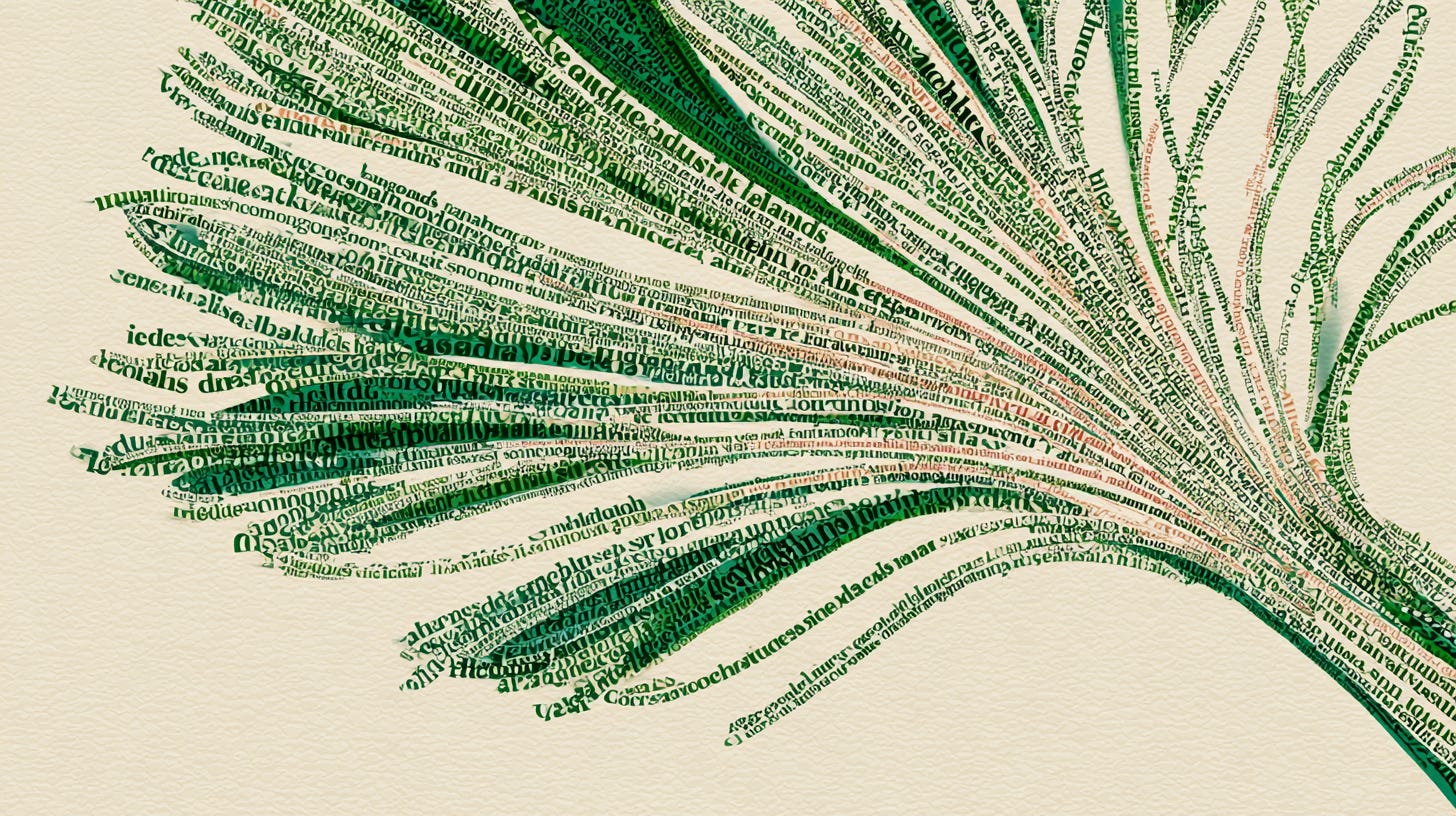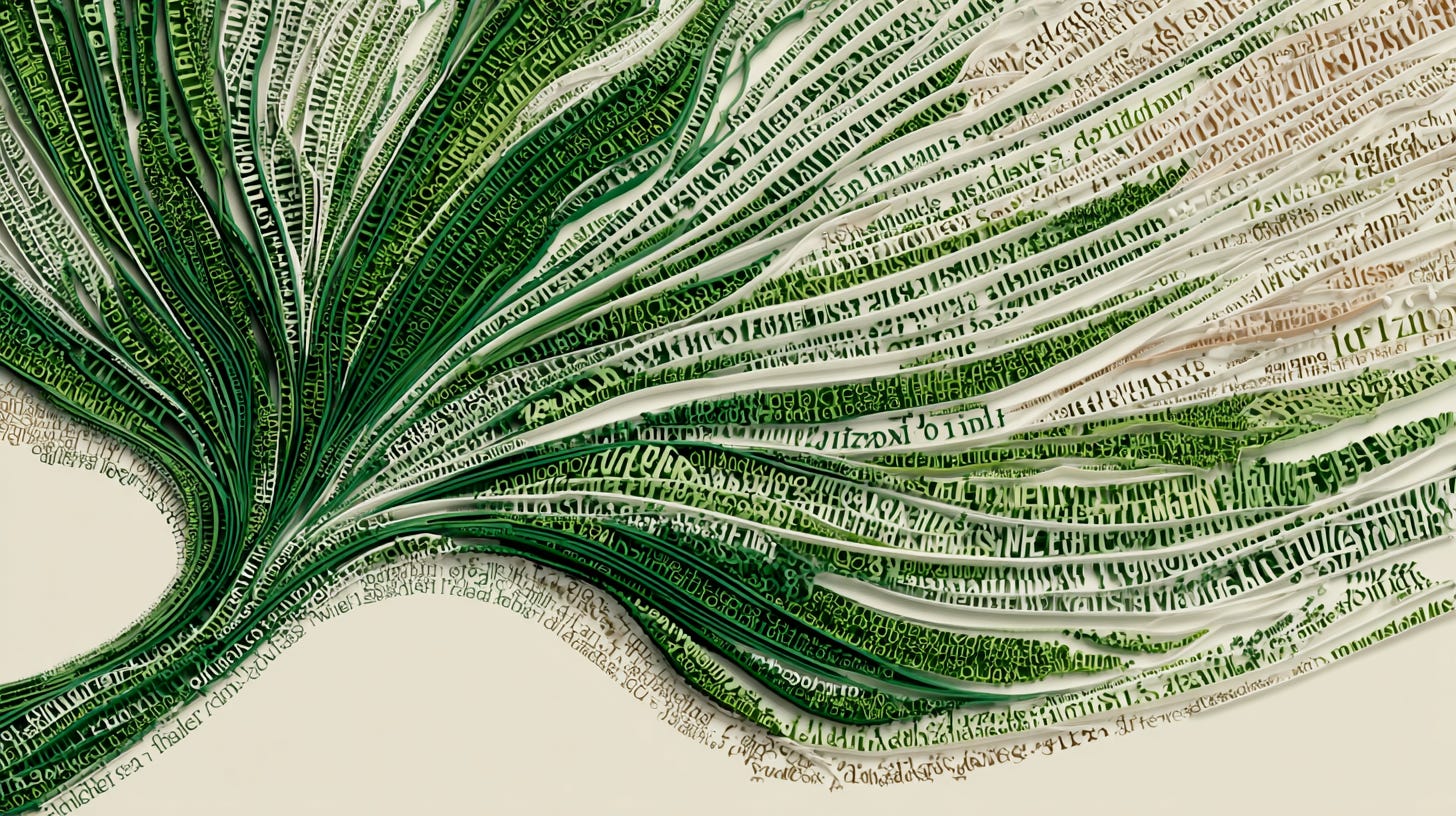How ideas flow
Or why you shouldn't be too cynical of academic conferences
Every three years, economic historians descend on a city, transforming it into a festival of economic history presentations. (No, that is not an oxymoron.)
Last week, it was Lund’s turn to host the World Economic History Congress. Over four days, almost a thousand papers were presented, their titles ranging from the scholarly to the eccentric: From ‘Scraps, Sheep, and Shoddy: Recycling, Repurposing and Upcycling in the Medieval Flemish Textile Market (1300–1600)’, to ‘Unfeathering the Nest: Japan’s Feather Exports in the Long Nineteenth Century’ to the tantalisingly enigmatic ‘Flowers of Evil’ (with conference code 66616; hat tip to the conference organiser). Academic gatherings are not known for their wit, but economic historians fortunately do not take themselves too seriously.
For the outsider, these congresses may seem like expensive, self-indulgent holidays for academics: taxpayer-funded talk shops for people obsessed with the minutiae of medieval accounting or the dietary habits of 19th-century Polish peasants. Yet the playful eccentricity conceals a serious purpose: the creation and diffusion of economically valuable ideas through informal networking. Congresses like these are, in fact, heirs to a long tradition of voluntary associations devoted not just to exchanging ideas for their own sake, but to spreading knowledge and, ultimately, improving how societies work and prosper. There is a reason these gatherings have persisted for centuries: they are engines of economic progress.
For evidence of that, consider a recent paper in The Economic Journal by Francesco Cinnirella, Erik Hornung and Julius Koschnick. The authors take us back to the roots of these economic societies and asks a fundamental question: how did these networks help transform local economies, and what was their role in the rise of useful knowledge? Cinnirella and colleagues’ question is as relevant today as it was two centuries ago. The Industrial Revolution, as countless scholars have observed, was not merely a British or even a Western phenomenon. Its precondition was a rapid and decentralised expansion of useful knowledge: the kinds of ideas that allowed inventors and entrepreneurs to experiment, tinker, and eventually produce breakthrough technologies. But how did that knowledge become accessible outside elite circles? And why did some regions race ahead, while others lagged behind?
The authors propose that economic societies – open, semi-formal associations dedicated to improvement and experimentation – were a key vehicle for the diffusion and local adaptation of knowledge. Unlike exclusive scientific academies or secret societies, these institutions were founded on the principle of the common good. Their stated purpose, as the Hamburg society put it, was ‘to apply every useful result of human knowledge, discovery, and invention to practical and civic life’. In practice, this meant holding regular meetings, debates and public lectures, awarding prizes for innovation, publishing journals, and, crucially, creating social networks that lowered the cost of accessing new ideas.
To test this hypothesis, the authors focus specifically on Germany, digitising membership lists from all active economic societies established there between 1764 and 1800, geo-referencing more than 3,300 individual members across fifteen societies. They matched these locations to later measures of regional innovation. They specifically looked at the density of valuable patents and the number of exhibitors at the 1873 Vienna World’s Fair, both strong proxies for technological capability. To account for potential endogeneity, since societies were not randomly assigned across space, they used the distance to the nearest society seat as an instrumental variable, showing convincingly that society location was not correlated with pre-existing levels or trends in elite human capital, nor with the economic geography of earlier centuries.
The headline result is straightforward: regions with a higher density of economic society members were significantly more innovative in the late nineteenth century. Doubling the local density of society members was associated with a 21 per cent increase in the density of valuable patents, and a 16 per cent increase in the density of World’s Fair exhibitors. The relationship remains strong even after controlling for urbanisation, proximity to universities, the presence of trade routes, and an array of other possible confounders. The effect is robust to a battery of placebo tests and spatial randomisation exercises, which confirm that it is the location of societies, not simply cities or universities, that predicts later innovation.
But the most interesting findings go deeper. First, the impact of societies was not fleeting: regions with more members experienced an immediate increase in manufacturing activity, especially textiles (the focus of many society prize competitions), and were quicker to establish vocational schools. By 1849, these regions had a higher density of highly skilled mechanics, a group Meisenzahl and Mokyr call ‘tweakers’, artisans operating at the technological frontier, crucial to the process of invention and adaptation.
Second, societies not only diffused knowledge, but they also shaped the direction in which it developed. Using gravity-type models, the authors show that pairs of regions whose members belonged to the same society were more likely to invest in and patent similar technologies, even decades later. This spatial path dependence, they argue, was equivalent in magnitude to the effect of a direct railroad connection. Societies thus fostered both the spread and clustering of technological capabilities, contributing to the famous patchwork of German industrial specialisation in the late nineteenth century.
Finally, the authors provide direct evidence of the social mechanism: economic societies lowered the barriers to communication. Their membership was open and largely egalitarian, drawing from both the nobility and the upper-middle classes such as government officials, physicians, academics, merchants, and craftsmen. Society activities included debates, lectures, libraries, and prize competitions, all designed to disseminate useful knowledge beyond the elite.
The economic value of such academic networks is further reinforced by new evidence presented at the Congress on Monday. In their paper ‘Seeds of Knowledge: Premodern Scholarship, Academic Fields, and European Growth’, Matthew Curtis and David de la Croix drew on a remarkable dataset of 60,000 premodern European scholars to show that regions which historically produced more scholars – especially in science and botany – were those that went on to enjoy higher income per capita by 1900. They also provided causal evidence that flows of people, such as Huguenot or Byzantine refugee scholars, could trigger a long-term local uplift in knowledge production and prosperity. These findings suggest that networks of scholars and the accumulation of academic capital have lasting economic consequences, both by spreading useful information and by inspiring future generations.
These two studies make a compelling case: the prosperity of regions depends not only on the accumulation of physical or financial capital, but on the webs of intellectual connection that transmit, adapt, and multiply knowledge over time. But if the mechanics of academic networks were once rooted in personal ties and the physical movement of scholars, how has the diffusion of knowledge been reshaped in an era defined by rapid communication and mass infrastructure? It is this transition, from the world of salons and societies to the age of the railway and the internet, that Caterina Chiopris addresses in her job market paper, ‘The Diffusion of Ideas’.
Chiopris’s study, which she presented at a LEAP seminar last year, takes the story into the nineteenth and twentieth centuries, asking how the physical and technological networks of the modern world have transformed the way ideas are produced, transmitted, and adopted. Using massive bibliographic databases for nineteenth-century Germany (22 million records), combined with detailed records of railway expansion, she examines how the introduction of the railroad changed the geography of knowledge production, not just in terms of quantity, but in the very structure and diversity of ideas.
Her key empirical question is: Did denser spatial connections increase the production and diffusion of new ideas? Or, paradoxically, did they foster specialisation and fragmentation, making some ideas more local and others more global?
I found her answers surprising. The railroad, Chiopris shows, did indeed increase the overall quantity and diversity of knowledge: more publications, more new words and concepts, and a faster rate of innovation as measured by the time taken to close ‘knowledge gaps’ between previously disconnected concepts. That is as I expected. However, she shows that the railroad also led to specialisation: scholars became less likely to be polymaths, more likely to cluster with those in the same discipline, and cities became more specialised in particular fields.
Most strikingly, the railroad decreased the overall diffusion of ideas across disciplines and locations. While new ideas spread more quickly within specialised fields and between connected cities, they were less likely to be adopted outside their immediate cluster. Knowledge became more fragmented, with successful ideas (those that diffused widely at first) tending to persist, while others remained parochial and short-lived.
Together the Cinnirella et al., Chiopris, and Curtis & de la Croix papers show that the flow of knowledge depends as much on the structure of networks – social, institutional, infrastructural – as on the brilliance of individual minds. Economic societies catalysed innovation by lowering the costs of local communication and experimentation; railways and modern infrastructure multiplied these effects, but at the price of greater fragmentation and disciplinary silos.
The lesson is clear: if we value innovation, we must lower the barriers to the flow of information, not only by building networks, but by ensuring they remain open, diverse, and capable of cross-fertilisation. Too much specialisation can entrench local strengths, but also limit the serendipitous recombination that is the source of truly radical ideas.
Artificial intelligence promises, of course, to transform all of this. But how exactly? We are entering an era where machines routinely augment, combine, and distil knowledge at speeds previously unimaginable. Yet whether AI will enrich our intellectual networks or further deepen fragmentation remains an open question.
With the next World Economic History Congress in Montevideo, Uruguay in 2028, it is only a matter of time before we are treated to AI-generated classics like ‘Scraping Sheep: Training Large Language Models on Medieval Wool Prices’ or ‘Unfeathering the Algorithm: Neural Networks and Nineteenth-Century Trade Flows’ or ‘Flowers of GPT: Machine Learning and the Dark Arts of Data Cleaning’. I cannot wait!
A big thank you to my co-authors – Chris Colvin, Leoné Walters and Sarah Ferber – who presented our three joint papers. You’ll read more about these ideas in future posts. And congratulations to the team at Lund, notably my former student Igor Martins, who organised a perfect conference. ‘How ideas flow’ was first published on Our Long Walk. The images were created with Midjourney v7.





I very much look forward to the AI "period" you referred to at the end of your article; with great curiosity. Already I heavily rely on AI as the go to when I need historical facts and insights. I am especially curious as to the extent of difference, if any, between insights via AI and, say, articles such as those written by you and your colleagues. Perhaps that can become a research topic by itself? Experimentation should not be too difficult: Ask a researches to cover a certain topic; and then compare the results with what AI dished up. My hypothesis is that if it is VERY AUTHENTIC reasearch, the human researcher may outperform AI. But on the other hand, if both the researcher an AI consult the same reference materials, "who" will provide the better insight???
'Those who cannot remember the past are condemned to repeat it...' You meet people who have qualified to attend tertiary education but I hear pure ignorance everyday.